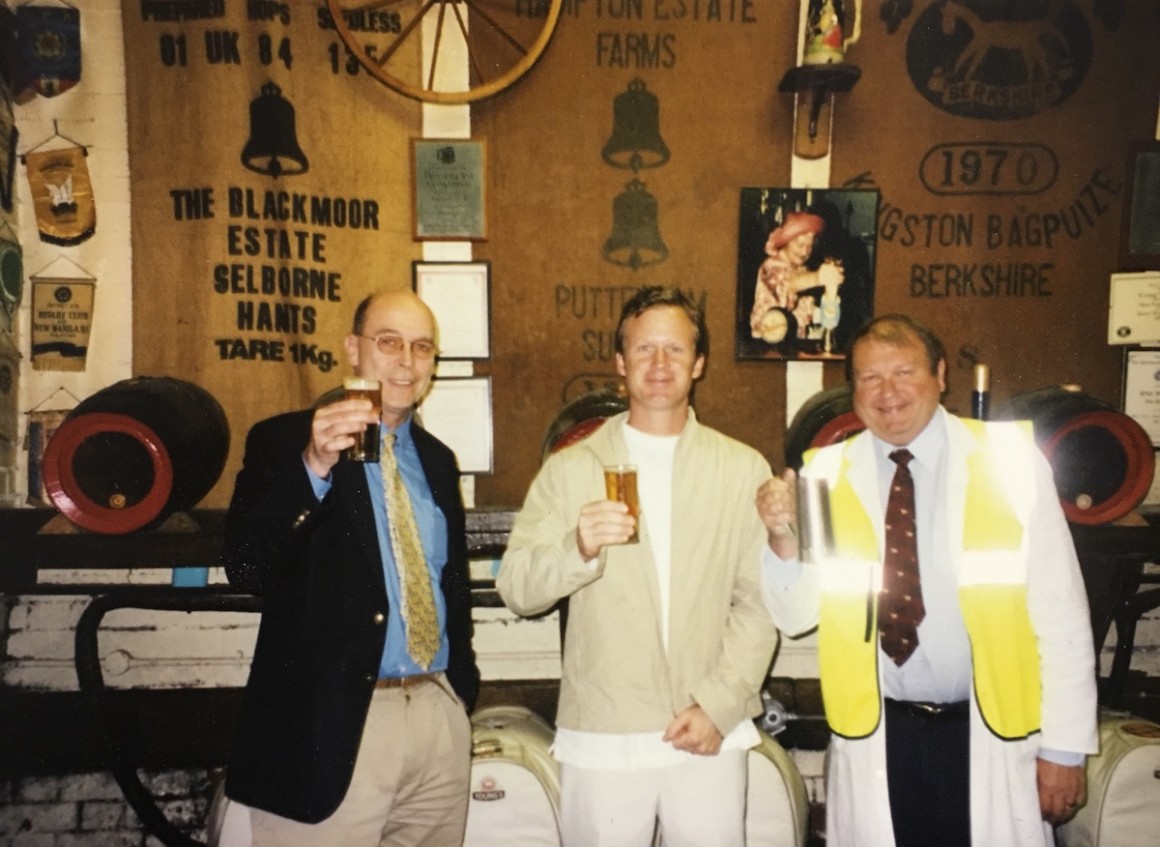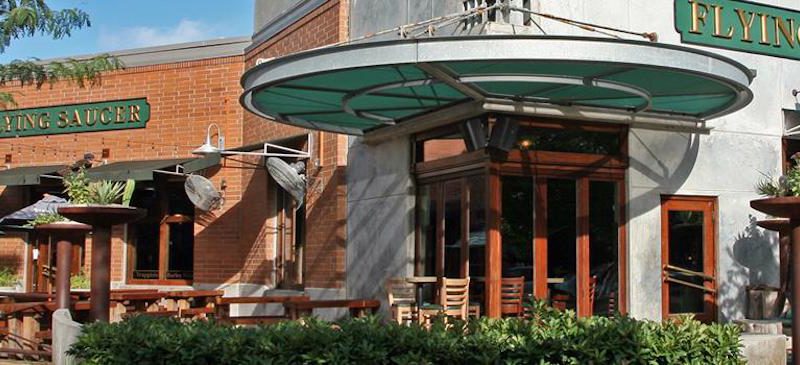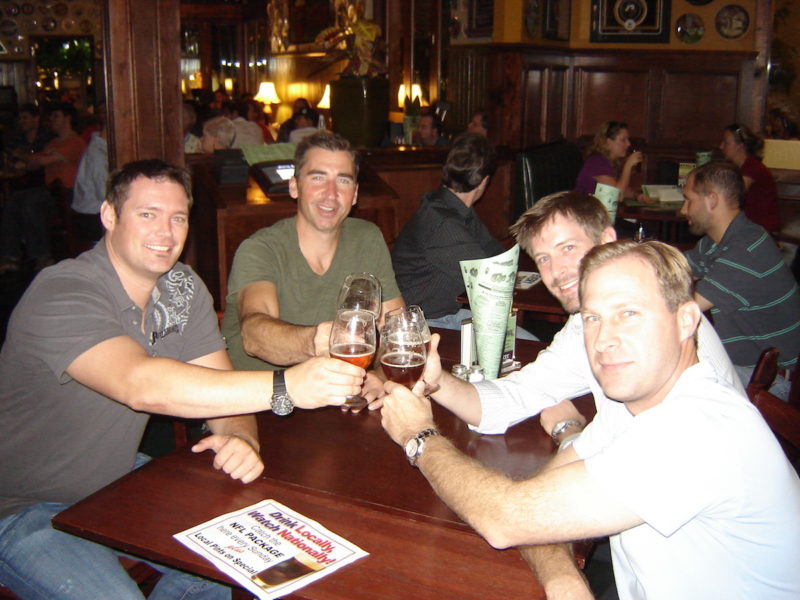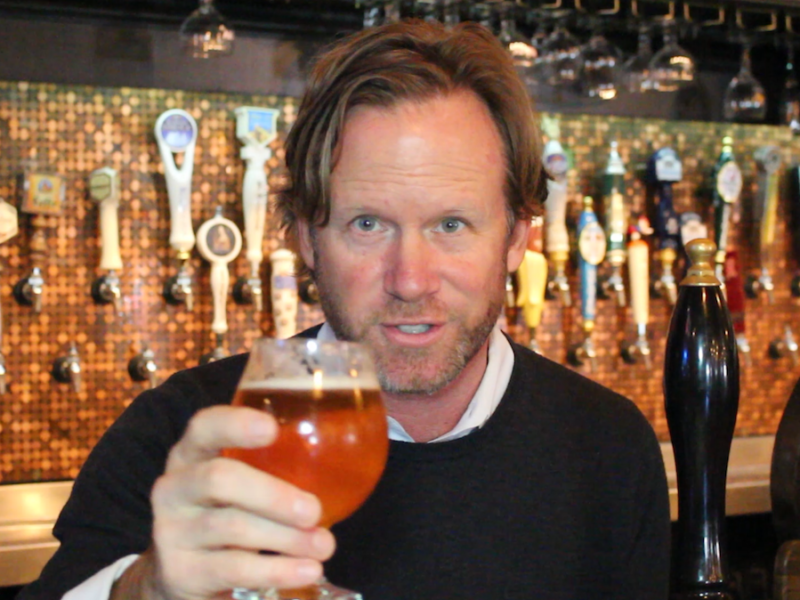As we roll into 2016 and with the recent opening of our newest concept, Mudhen Meat and Greens in Dallas’ Farmers Market, I find myself looking back on my 23+ years in the beer world and comparing the “state of the union” then and now. We see the stats about how fast the industry is growing, but it’s still amazing.
THEN
In 1993, I was managing for a large restaurant group when a friend introduced me to Dallas’ first brewpub, which happened to be the second in Texas. While working there, I began to understand how excited customers were about beer. The success and popularity of brewpubs and beer-focused restaurants over the last decade has really confirmed this passion. Hell, the launch and success of Flying Saucer in 1995 wouldn’t have been possible without the enthusiasm surrounding craft beer.
NOW
We have grown to over 15 Flying Saucers across six states, plus six other beer-centric restaurants, all serving great beer. We enjoy helping our customers find their old favorite and discover new ones.
THEN
There just wasn’t a lot of beer in the marketplace and the majority of the special beers was imported. You typically didn’t find a large local offering back then. Outside of a handful of American brewing pioneers like Sierra Nevada, Breckenridge, Rogue and Anchor, there wasn’t much else going on. Even the pioneers could be hard to come by and some lacked exposure. Most customers sought after the imports from Belgium, England, and Germany to find their good beer. The key was they were after good beer.
The big three had such a heavy influence that it was really hard to encourage distributors to pick up some of these fantastic breweries. Partly because there was so little knowledge. Even if they did pick up a small guy, the distributor would—in most cases—keep the “workhorse” and shed the special jewels in the portfolio. Also, there just weren’t enough restaurants or bars selling craft beer to make it worth it to the distributors. If a new brewery came to town, oftentimes there weren’t enough taps flowing to make it worth the while. The breweries had their work cut out for them to make sure their beer was moving and fresh. And sadly, sometimes you’d find stale ale.
NOW
The pioneers are growing stronger than ever and have inspired many more of our new breweries that we’re fond of today. Local options are everywhere, but we’re seeing fewer imports on the shelves. The small guys continue to work their asses off to build relationships to make sure their beer is moving and that it finds new customers. We’re happy to build these relationships and pass on the benefits to our customers.
THEN
There was so much opportunity and need for education—both for ourselves and the customer. How do you procure good beer? Which beers should be put on tap? How do you pronounce these obscure German beers? What are they? What are the differences between a Dunkelweizen and a Rauchbier? We didn’t have Google back then and you didn’t go online to BA. We had to educate ourselves before we could educate our consumers. We turned to resources like Michael Jackson’s World Guide to Beer to educate ourselves. I’ve worn out multiple copies. We all owe a big thanks to Michael Jackson for shining a spotlight on craft beer in the United States.
NOW
The Internet has leveled the playing field. Information is everywhere and customer expectations are higher. That’s why it’s critical to rely on those relationships and for our staff to know their stuff. We need to be able to carry those seasonal brews that are right for us. We must understand a brewery’s schedule and plan for their special releases. We must be smart about style diversity and we need to know how to match up a customer’s palate with the perfect beer.

Learning about acids with barrel master, Jeffers Richardson from Firestone Walker.
(From L-R) Marc Castaldo, Captain Keith, Caitlin Mohon, Jeffers Richardson
THEN
We relied on fewer breweries to give us more options. Specifically at Flying Saucer. We might have six taps dedicated to one brewery, which is unheard of today (unless it’s a tap takeover). We had six ceramic lightning bolts from Breckenridge because they were the best options in the marketplace at that time. We still love Todd today, but we now have many other breweries to support as well.
In the beginning, we had maybe 70 taps and it was really hard to fill those with quality beers. We have always been fiercely loyal to the locals – particularly the ones that produced beer true to style and in the right way. We supported them because we felt it was the right thing to do. We knew if we stuck with them and gave them the chance to grow, we could give the customers the good beer they were after. Pale ale was the hoppiest thing around, specifically, Sierra Nevada Pale Ale and Anchor Liberty. We could barely get people to drink a pale ale, but we did. Once they started drinking better beer, they never turned back. Breweries like Sierra Nevada changed the lives of a lot of people.
NOW
We carry multiple DOUBLE and IMPERIAL IPAs on our walls and in our bottle lineup. We have special release parties for wilds and sours and customers can even go out and buy special equipment to add their own hops to any beer. We have more local breweries than ever, especially in north Texas. We have to carefully consider which beers we’re able to carry on our tap walls. We have to consider whether it best represents a style that we want to offer our customers. We sometimes even get special opportunities to brew our own exclusive special blends with our favorite breweries. This is partially due to the trust we placed in them many years ago. We’re still proud to carry Breckenridge and Sierra, but we’re also proud to carry the new school and locals they’ve inspired right next to them.
THEN
People paid attention to the brewers who had history behind them—breweries like Young’s Ram Brewery and Fuller, Smith & Turner. People cared about the historical value of lambic producers and were curious about styles and their origins.

Getting a history lesson at The Ram Brewery with James Young and head Brewer Ken Don
NOW
People are still curious about styles, but I think the attention to history or the story has fallen off a bit. That’s something we should get back to. Let’s remember where we came from. Some folks go out hunting the whales – those special, limited releases we love, but what about the core brand of a brewery? We forget (or don’t know) about the beers that helped our favorite breweries get to where they are today. Let’s “dance with who brung ya” and continue to push the core as the best way to educate newcomers.
THEN
All that to say, while there was an energy and a buzz, there were very limited choices when you went out to eat and wanted a good beer to go along with your meal. Even if you were looking for a bottle or two to take home, you couldn’t find it in the grocery store.
NOW
Good beer can be found many places, even with good food. Special package stores and grocery stores are stocked from floor to ceiling with great options. (Special note: be wary of buying your craft beer in the grocery store. Make sure you know that it’s a fresh supply and being rotated properly.)
It’s a great time to be a craft beer fan and I’m happy to have been a part of the enlightenment. Flying Saucer will continue to focus on the relationships and the core principal of serving good beer to good people. We’ll continue to be loyal to our longtime brewing partners while giving the new guys an opportunity to find a special place in your heart.
Looking forward to helping you find your next favorite beer…








